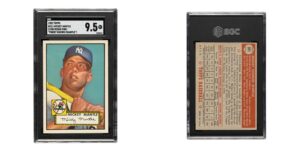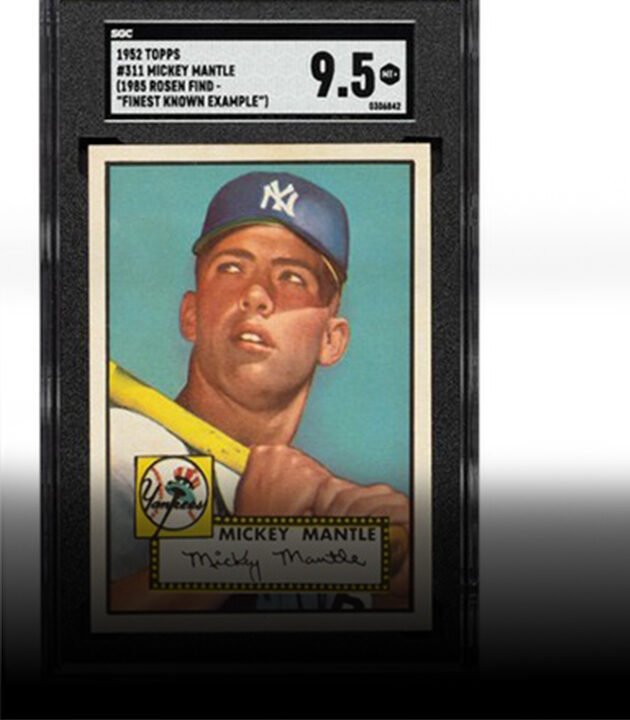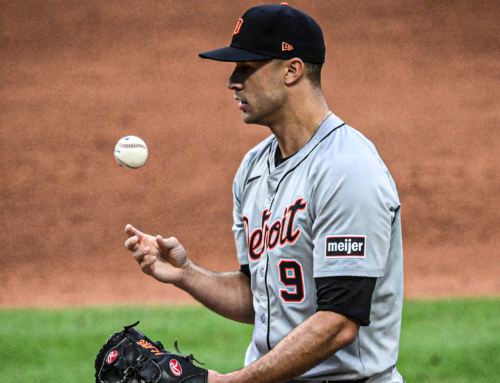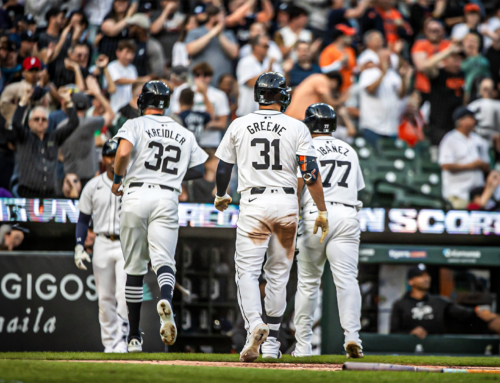Earlier this summer, a 1952 Topps Mickey Mantle baseball card sold for $12.6 million, the most valuable piece of sports memorabilia ever to change hands at auction. In 1960, now known to those of us in the sports card hobby as the “Topps Tea Party,” one New Jersey man infamously dumped hundreds (if not thousands) of the same 1952 Mickey Mantle Baseball card into the Atlantic Ocean.
The economics of the treasure now lining the ocean floor are obviously striking, but the events leading up to this moment illustrate the hobby’s seemingly cyclical crisis. Today, “The Hobby” is equipped with technology complex enough to push the industry forward, but it must learn from past mistakes to avoid another, intolerable tea party collapse.
Sy Berger, a young executive at Topps in the 50’s, is credited with creating the 1952 Topps Baseball set. It was the first “modern” card set ever to hit the shelves. The release was so wildly successful that Topps made the fateful decision mid-summer to create and expedite the release of a “series 2” set of the 1952 cards.
What the popular card company didn’t foresee was that by the time it released the second set, the attention spans of its consumers (predominantly children) were short and had already moved on to football season. Additionally, the company found these consumers were singularly focused on the newest products. By the time the following baseball season came around, Topps realized that it had massively overproduced the series 2 set.
For nearly a decade following, Sy Berger was tasked with unloading the unwanted stock. He sought out events he could sell them on the cheap, traveling to carnivals and trade shows all over the country hoping to make pennies on the dollar. He quickly found it was difficult to even give them away.
In 1960, when the warehouse space became more valuable to Topps than the 300-500 cases of 1952 cards stacked in the corner, Berger hauled every case (said to fill up 3 garbage trucks) onto the center of a garbage barge and drifted a few miles off the New Jersey coast. He then released hundreds, if not thousands, of Mickey Mantle, Jackie Robinson and Eddie Matthews cards into the water.
Overproduction issues
After three decades of rebuilding the industry, capped off by a booming run into the mid-and-late 80s, the 90s found themselves in all-too-familiar waters. The major card companies were, yet again, overproducing their sought-after products.
In 1994, Chicago radio host “Papa Joe” Chevalier organized a mass burning of baseball cards in protest of that year’s Major League Baseball work stoppage. Some 500,000 cards were sent to him from fans all over the country, an amount so big the fire marshal refused to grant Chevalier a permit for the planned bonfire. In the end, a commercial wood-chipper decided the fate of those once treasured cardboard cutouts. This act is synonymous with a time in our hobby now enshrined as the “Junk Wax Era,” signifying the value of the cards sealed in their wax packs. It really is a shame, too.
The 90s had the potential to be the golden era in sports cards. There were stars all over the country in all major sports. Michael Jordan and Kobe Bryant, Shaq and Penny Hardaway, Ken Griffey Jr., Barry Sanders, Deion Sanders, Jerry Rice, Wayne Gretzky, Grant Hill and wrestling’s New World Order. And the same baby boomers who were buying packs in the 50s and 60s now had adult income, and children of their own to teach.
Unfortunately, as the total number of cards climbed drastically, the feeling of holding something rare or special dissipated swiftly. Kids stopped collecting cards, and adults stopped investing in cards. What was once a cultural phenomenon, “The Hobby,” by all measures, died in the 1990s.
Collecting Cards is back in the mainstream consciousness
One more hit of the fast-forward button, and you’ll find yourselves in the present day. It took an entire generation to rebuild a broken system yet again, and hobby enthusiasts would admit that only in the last three or four years has it started to feel like cards might be returning to mainstream sports and culture. Technological advancements have made it easier than ever to share, sell and ship trading card collections, which carries even more water as young, hopeful entrepreneurs dominate today’s age.
People are excited about cards again. But those same people are looking around for signs of another crisis. Watching closely to see how they ensure their supply never outweighs the demand, all eyes are on the major card companies.
The dynamic this creates is fascinating and may point to signs of strength. Amidst everything going on in the world today, there is no shortage of people involved in sports cards, and more people are entering the field every day. Gone are the days where one could sell just about any professionally-graded card for over $100, however, cards at lower prices are changing hands at an exponential rate.
Whales are strategically going after the most sought-after cards and paying record prices for them (like the Mickey Mantle 1952 Topps that sold for $12.5 million). Meanwhile, collectors are taking advantage of low prices and purchasing cards for their personal collections that they otherwise may not have been able to afford.
At this point, it feels like the optimism is outweighing the skepticism, but history has a funny way of repeating itself. Are we in for another sports card collapse, or will new technology allow the industry to stabilize? Recession or not, someone will always be chasing the diamond at the bottom of the ocean.
This 1952 Topps Mickey Mantle rookie card, called “the finest known example in the world,” was sold at Heritage Auctions on August 28, 2022, for $12.6 million.

Courtesy of Heritage Auction
Follow me and my collection on Instagram @SouthpawSlabs












